Rising damp and its effects on masonry
This past week, we took a look at a historic brick building built over 100 years ago with low temperature fire clay bricks. This type of construction is extremely common here in Washington DC, and the same principles that we discussed related to compressive strength, moisture permeability, and deterioration and repointing apply to almost all of the historic buildings here in Washington DC. The picture below shows a different angle of the same deterioration and spalling at the face of the masonry facade that we discussed this past week. We will continue discussing some of those topics today, but will also take a more in-depth view of the issues of deterioration spawned from rising damp, in our discussion.
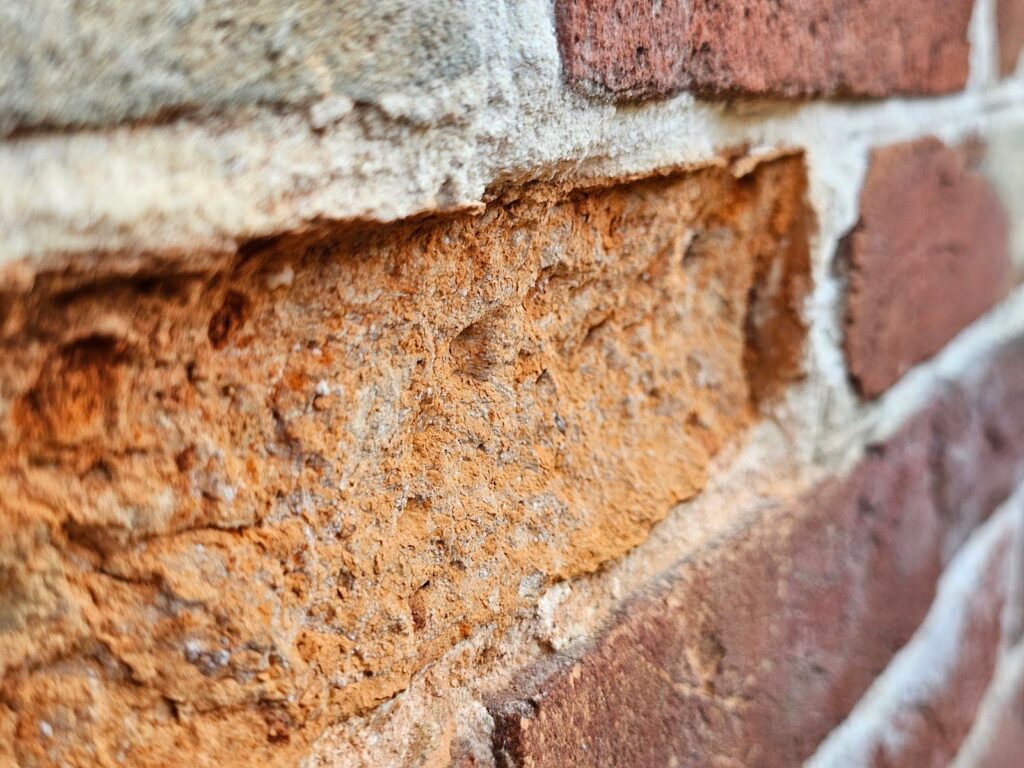
Spalling occurs because of a variety of reasons, but one of the main reasons is because of improper pointing. We really stress the point that owners of historic brick buildings need to use contractors who specialize in really care about proper historic restoration. It’s extremely important when it comes to repointing.
If people use the wrong mortar, in repointing, it can cause serious damage to a building because it can cause all the faces of the brick to break off. That type of damage is extremely complicated to repair. It’s almost easier just to build the building over again, but the reason this happens so often is because so many people out there do the work and have no idea what they’re doing.
Learning about historic masonry isn’t necessarily that complicated, it just takes time and effort to learn. Many low quality contractors don’t take the time to educate themselves on historic masonry because to many of them, learning and studying and absorbing the technical details is something that bores them. We think it’s probably accurate to say that it takes a special type of person to learn historic masonry restoration.
The average contractor might have lots of strength and brawn l, and this work definitely requires that as well, but the other part of learning the technical details uses an entirely different set of muscles. Those type of muscles are in the brain and require a studious type of attitude.
From a distance, the brick shown in the picture below might look similar to the remainder of the bricks in the wall, but this brick is actually spalled, the face has detached from the remainder of the substrate brick below. The part of the brick that remains is more susceptible to moisture and will continue to deteriorate at a non-linear scale.
In other words, now that that face has broken off of the brick, the rest of the brick will fall apart faster than it would otherwise. We say that this is nonlinear, because in a graph or chart, the rate of deterioration increases at an increasing rate, which would be visually presented as a curve instead of a straight line. The deterioration is both non-linear and also exponentially nonlinear. The amount by which the damage increases over a scale of time increases more and more, or you can say the damage increases faster and faster.
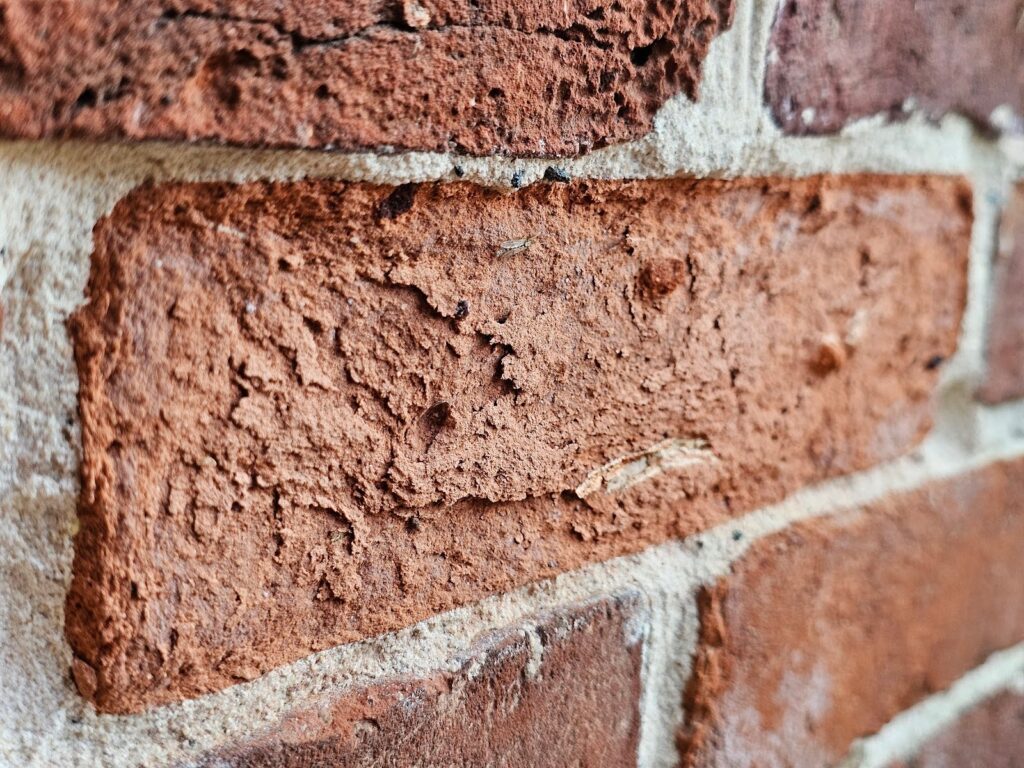
The exterior face of the brick provides bit of a shield to the majority of the inside of the brick. The external face of the brick is a bit less permeable and it’s a bit more vitreous. These bricks are essentially fired or cooked in a kiln that heats them up to extremely high temperatures.
In historic times, those temperatures were much lower than the temperatures that we use today for contemporary or modern brick yet it still makes a big difference because the processes of firing bricks, even historic times provided a degree of semi-vitreousness which protects the brick from deterioration and damage that naturally happens with exposure to the elements. Here in our climate zone those elements include a significant amount of typical precipitation and humidity.
Here in our climate zone, there’s lots of freezing temperatures. When bricks are excessively hydrated during cycles of freezing and thawing, deterioration like spalling increases drastically. That spalling also increases during those weather cycles in a more critical or heightened manner at areas where improper mortar has been used for repointing. This is an example of multiple factors which are compounding, like a vicious cycle.
In addition to the issues associated with freeze-thaw cycles, one of the other compounding factors that leads to increased rates of brick deterioration is happening here at this wall. In the picture below, you can see there is a white line of efflorescence that appears at around the 4th or 5th course above the adjacent grade.
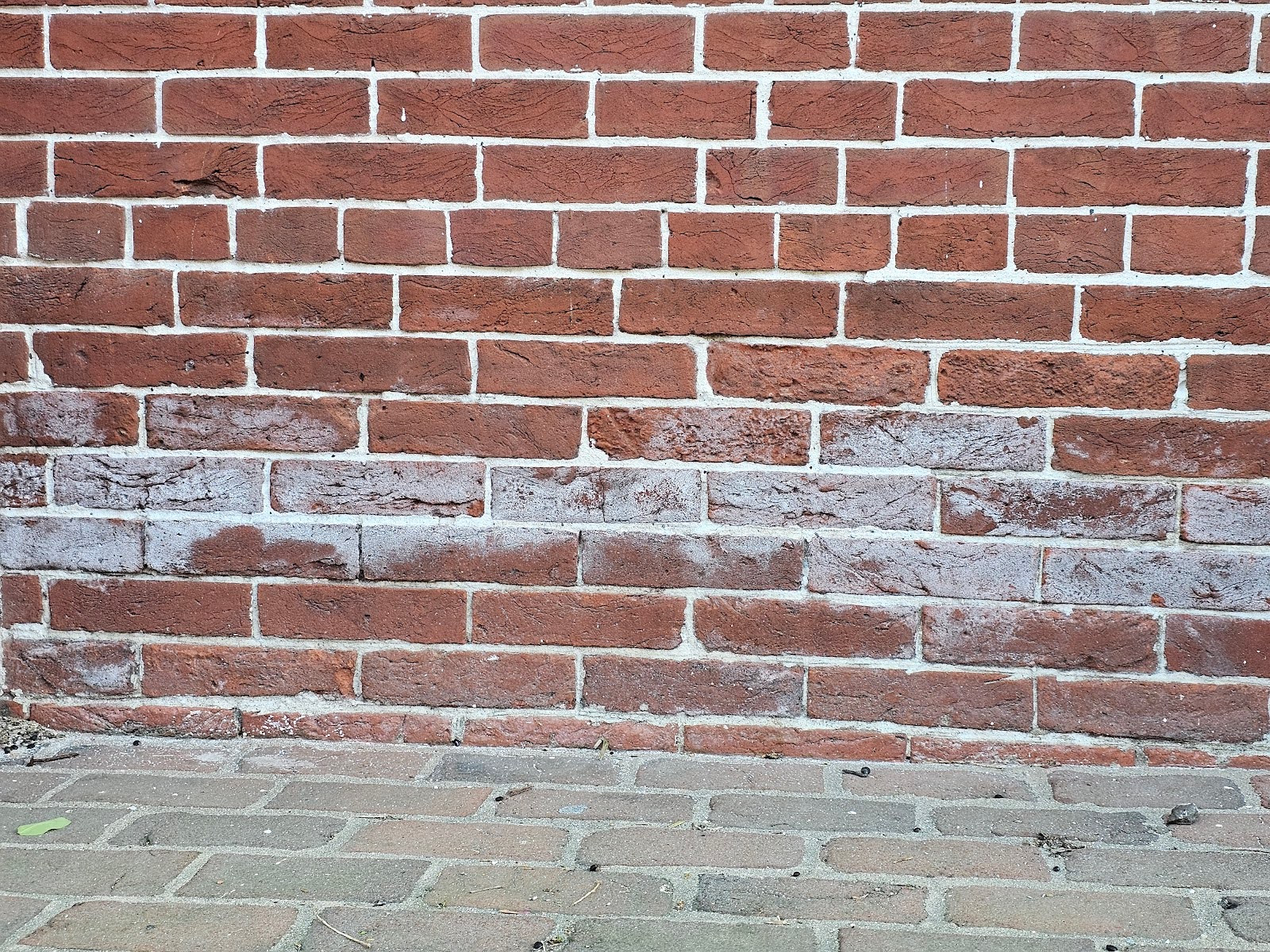
That white efflorescence is a salt that is found inside of the masonry. It’s naturally part of the masonry and in this case it has dissolved through hydration and migrated to the surface of the brick face. At that location, on the face of the brick, it has deposited the hydrated salts in the observable cloudy areas on the face of the wall that we can see in the picture below. The efflorescence itself doesn’t really cause damage to the bricks, but it’s a visually observable symptom of bigger problems that calls deterioration. In this case, this is a sign of acute hydration.
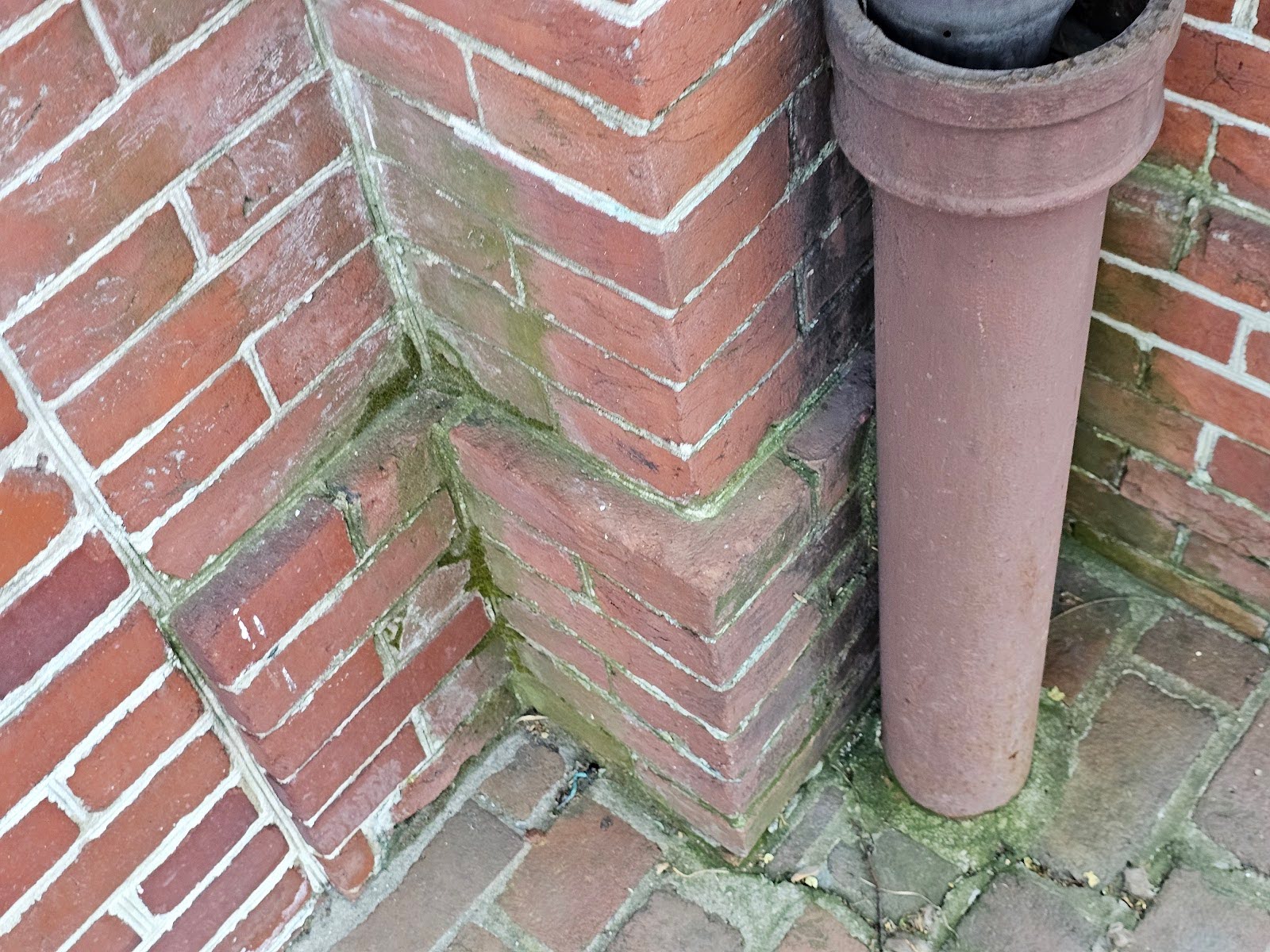
In addition to the particular concern of rising damp, most masonry facade walls are also affected, to some degree, by splashback which happens when drops of rain hit the ground and essentially splash or bounce back onto the base of the wall. The base of the wall area generally has a higher degrees of deterioration than upper portions of the wall, particularly where the roof is it set or configured so that there’s a projecting overhang above the upper portion of the wall.
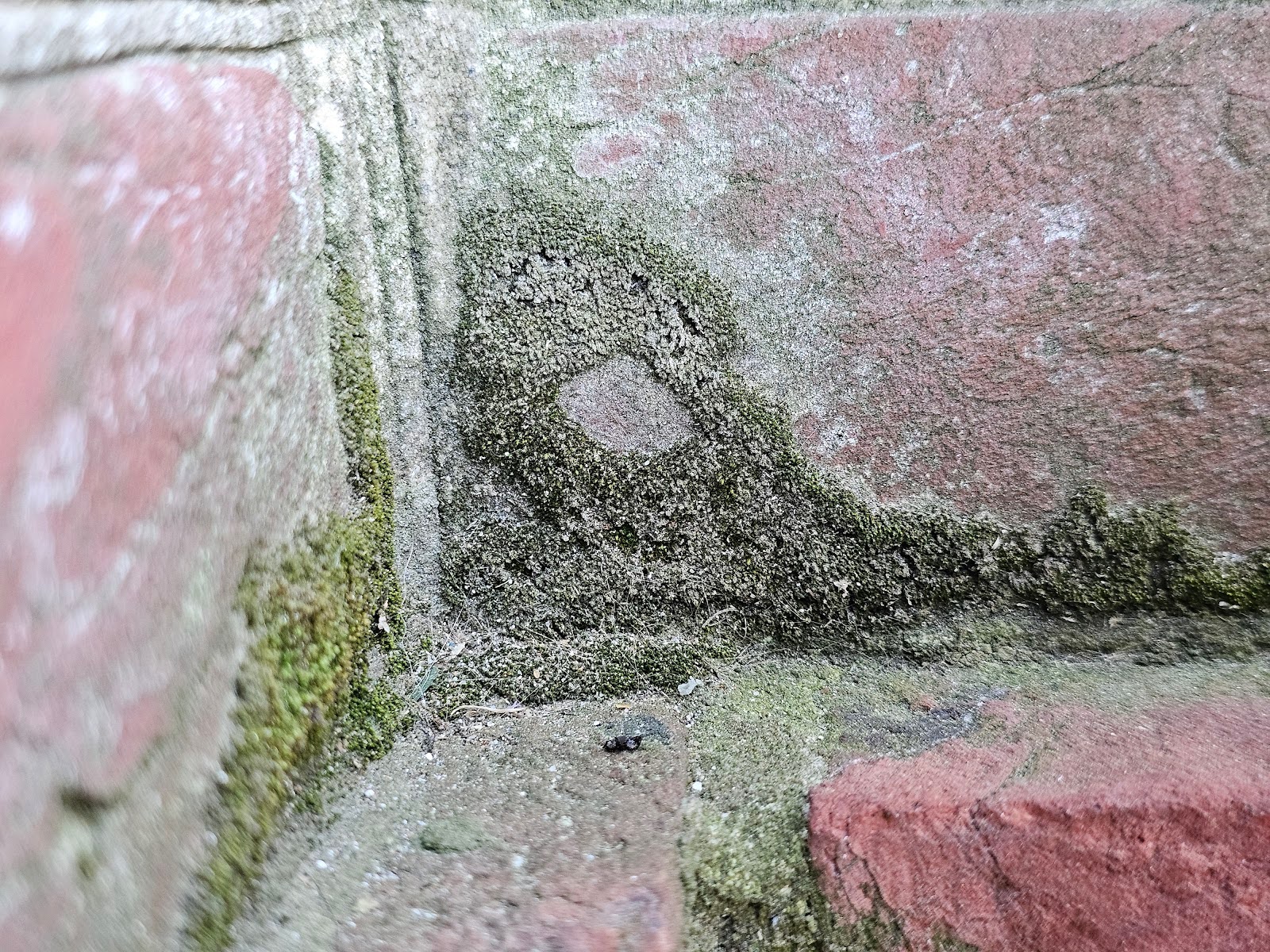
Another reason that this area of the facade might be critically affected by moisture, more than other parts of the building, may be that this portion of the wall is also shaded by trees above and in a north-facing position. We aren’t necessarily saying that there shouldn’t be trees above masonry walls, because that’s a very common occurrence and we happen to be a strong advocate for more trees in our neighborhoods and our community. Not all trees necessarily cause damage or cause prolonged cycles of dry out, but at this wall, there may be a combination of factors that are causing this wall to dry out slower on routine and repeated weather cycles of precipitation.
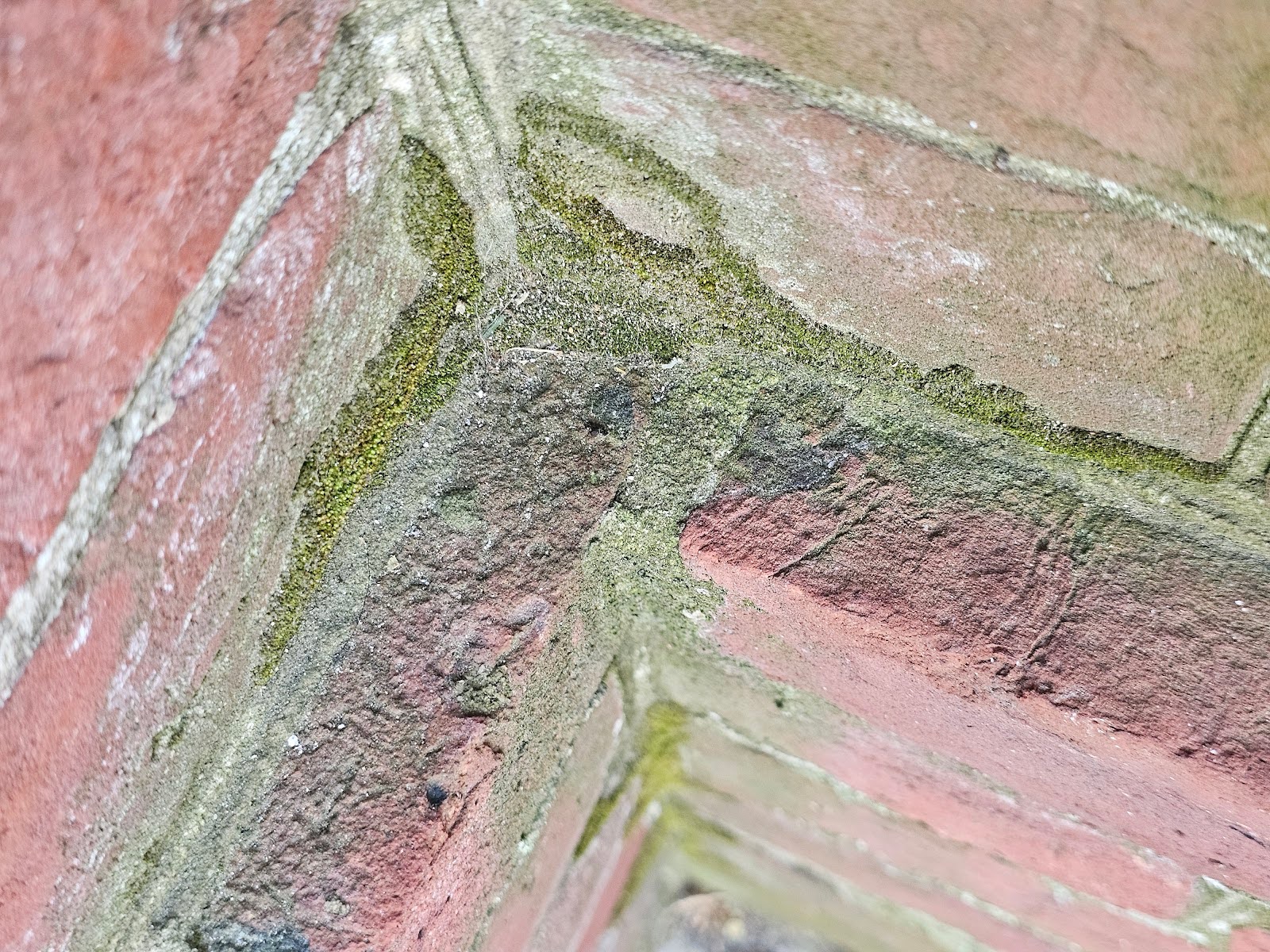
Our company, Dupont Tuckpointing and Masonry, specializes in masonry restoration, historic brick repointing, and tuckpointing services in the Washington D.C. area. These buildings are uniquely historic, and their preservation requires skilled masons who are technically trained in the best practices and knowledge of proper restoration techniques.
We understand the significance of maintaining the architectural integrity of these historic structures, and our team of experienced professionals is dedicated to delivering exceptional craftsmanship. Whether you require masonry restoration, tuckpointing, or brick repointing services, we are here to help.
At Dupont Tuckpointing and Masonry, we take pride in our work and strive to ensure that every project is executed with the utmost care and attention to detail. We are committed to preserving the rich heritage of Washington D.C.’s built environment for generations to come.
If you have any questions or needs regarding masonry restoration, historic brick repointing, or tuckpointing services, please do not hesitate to reach out to us. We would be delighted to assist you and provide you with the expertise and quality workmanship that your historic property deserves.
You can reach us by telephone at (202) 796-7644 and you can reach us by email from the contact form on our website at https://duponttuckpointingmasonrydc.com/contact-us/.




